The Anundarluu
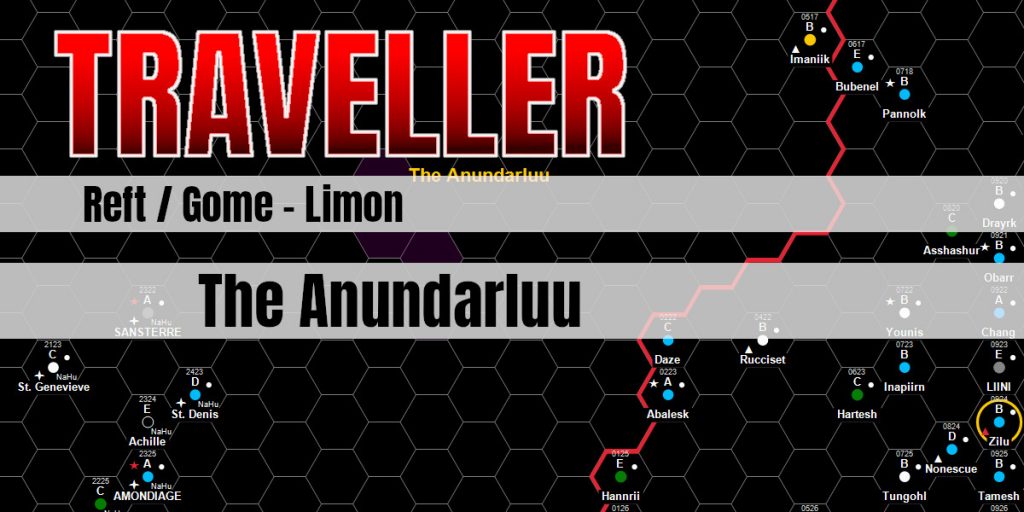
Explaining The Radiative Structure of the Anundarluu Nebula Using One Dimensional Cosmic Strings
Shikaana Emurkakinbir, Amagi Imigudiirshan, Uukirkiir Kimerka, Migaa Kumdiishlakar
1103, Rampart Journal for Astrophysical Research
The Anundarluu is one of the features of the Great Rift which has been speculated about but little actual study has been performed due to the difficulties and expense of getting there. However, we do have access to deep space telescopes that have been surveying the object for the past few decades. Most of the data in this paper comes from observatories at Abalesk (Balech, Gushmege, 0223), Imaniik (Gandonen, Gushemege, 0517) and Sansterre (Old Islands, Reft, 2322).
The Anundarluu is a cold nebula that has an average density between 10,000 and 100,000 particles per cm³. It is 4 parsecs long and 1-2 parsecs in width, creating a dark patch against the sky when viewed from the edge of the Rift or the Islands (where it is commonly known as the Ink Blot). Under different wavelengths more detail is possible to see, but penetrating fully to the core of the nebula has not been possible. However, some structure has been determined from outside observations using a variety of different wavelengths.
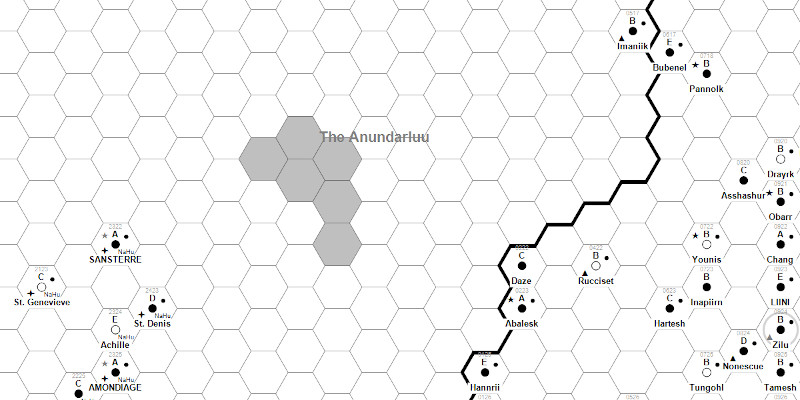
The density of the cloud is such that it blocks most light that passes through it. The cloud is dark, and is not lit from within by any stars. The bulk of it is dust coated with frozen carbon monoxide and nitrogen, with levels of molecular hydrogen, atomic helium, carbon monoxide, ammonia, formaldehyde, and other molecules. Normally it would be expected to be a star forming region, but this is not the case with the Anundarluu.
The cloud is also reflective to several wavelengths of light, making a full investigation from the exterior tricky.
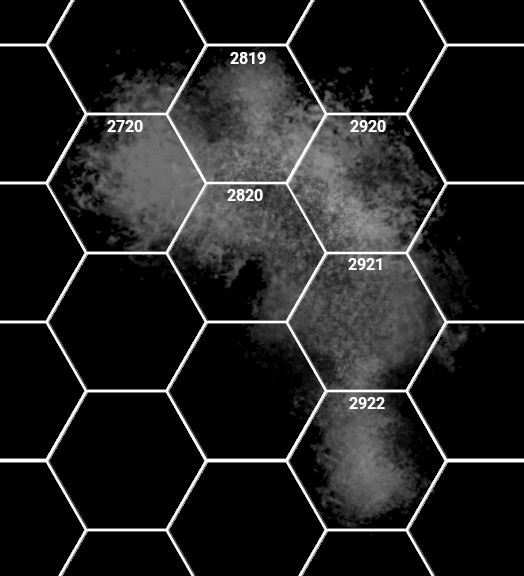
In visible wavelengths, the cloud covers approximately a 6 parsec area of space, starting at 2922 rimward, and spreading out to 2720 and 2819 coreward in Reft sector. It straddles the border between Gome and Limon subsectors.
From the outside, it appears as a dark patch against the sky, with only the brightest stars visible through the edges. The core of the cloud appears fully dark.
Probes that have been sent into it report that visibility is limited to about 10,000 AU at most once the outer layers are passed. No starlight reaches inside, so the darkness is absolute. The outer shell of the nebula is rotating at a rate of about one revolution every two hundred thousand years, or at about 30km/s. It isn’t clear how such a rotational velocity could be achieved given the known mass of the cloud. The inner regions seem to be rotating at much higher rates.
The cloud itself is moving in the direction of Riftspan Reaches at a speed of approximately 240km/s, or one parsec every four thousand years. This puts it at the top of the Rift in Corridor about 300,000 years ago.
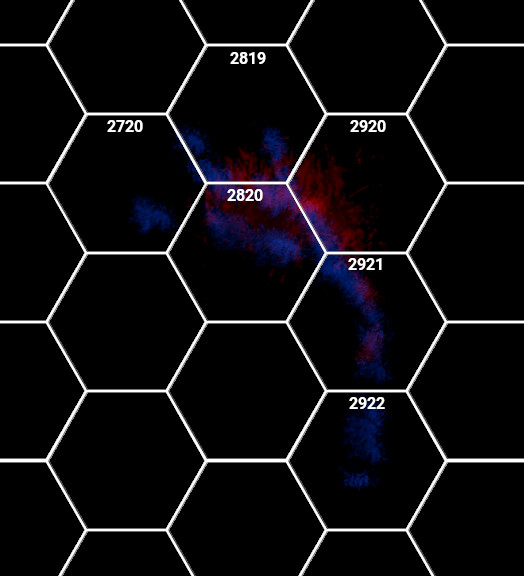
Under other wavelengths, a structure of sorts can be determined. There are hot spots within the cloud, as well as neutrino emissions which have no known source. There is a definite central ribbon within the cloud, which runs from 2922, and then splits as it goes into 2920/2820 becoming three different threads.
Most of the infrared region suggests a core temperature of a few hundred Kelvin, which is incompatible with most standard models. There is a single hotspot at the 2920/2820 border which may reach a temperature of 2,000K, but this is from a region significantly smaller than a planet, but a resolution of less than 10,000km has not been possible. A black dwarf has been suggested as a possible candidate, but the universe is not old enough for this to be likely.
Some preliminary information from the new orbital observatory at Imaniik has a resolution down to 2,000km, and even at these scales it is still a point source. It is hoping that by 1110 the full capability of the Imaniik Super Telescope will be online and a resolution of 750km will be possible.
The three most useful data sets have been from gravity measurements, infrared and neutrino sources. All imply a ribbon-like structure which frays into two or three strands at the Limon end.
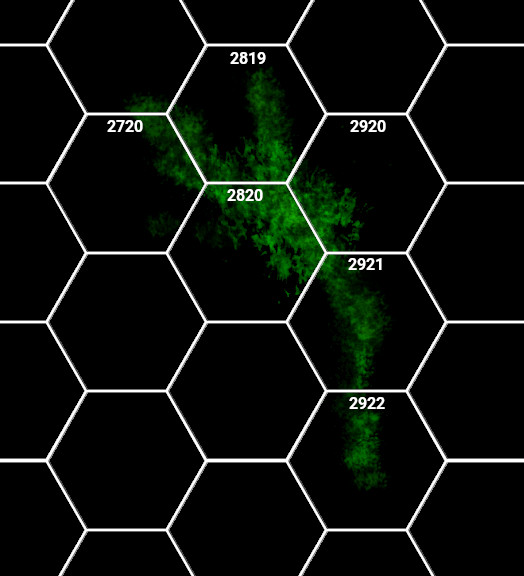
Gravity 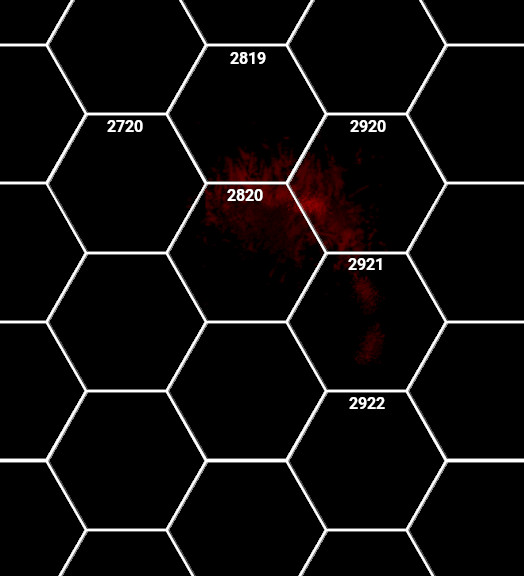
Infrared 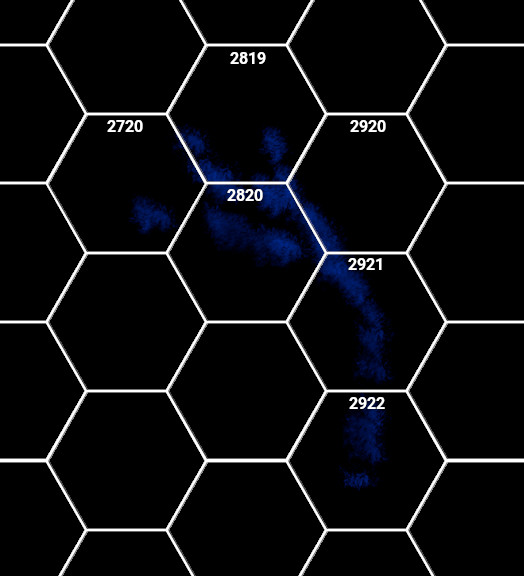
Neutrino
The gravity mass of the cloud is significantly higher than is possible from what is visible, suggesting that 99% of the cloud’s mass comes from dark matter. Measurements by the LGWSA (Large Gravity Wave Sensor Array) at Abalesk (Baech Gushemege, 0223) has been taking measurements for the last 300 years, and has shown a definite shifting of the mass distribution over this time. It’s only in the last 50 years that high resolution information has been possible though, so the readings may be due to changes in sensor calibration. If the readings are taken at face value though, then the variations cannot be attributed only to typical orbital motion.
The most active of the radiation coming from the cloud are the neutrino emissions, information on which has mostly been collated from 17 different starport sensor arrays in the region (see Gulamamkhi and Kamagimzakgu 1098 [1]Gulamamkhi E., Kamagrimzakgu I. 1098, Collective Neutrino Radiation Patterns in Jump Detectors. Rampart Journal for Astrophysical Research.). As such, there is significant noise in the data and some of the results have needed to be simulated, but all the evidence suggests one of two seemingly impossible scenarios – either the neutrinos are not being produced by a point source, or they are being produced by several thousand point sources (this is the lower estimate given by the authors, the upper bound was in the millions).
The region is known to be dangerous for Jump travel, with the variable gravitational anomalies requiring extensive calculations to plot around. They may even be central regions which are jump masked, though nobody has succeeded into jumping directly across the Anundarluu. Attempts to travel more than a parsec through the outer parts of the Anundarluu have often met with failure, and even a jump greater than a light year in distance can cause complications.
Though this is not the place to go into details, there is a large amount of anecdotal evidence that Jump travel within the cloud is unpleasant, with a great deal of mental stress being placed on those journeying there. For the most part, this seems to be down to ‘bad dreams’, and most of the papers that have been published on the matter (for example, see Amukhige et al, 1054[2]Amukhige L., Gugada S., Shilemukhaa M.. 1054, Psionic Activity Measurements in the Anundarluu, J-Space Astrodynamics) point to there being Psionic activity in the region.
Recently however, a more complete analysis could find no psionic activity via psionic sensors, and both control subjects and those wearing psionic shields suffered similar levels of affects in the region (Moreau et al, 1101[3]Moreau E., Pascal A., Sauveterre C., 1101. Controlled Study of the Mental Stress Affects in the Ink Blot, Examen de la Psychologie Amondiage).
Further studies of this should be possible next year with the planned Deepnight Endeavour mission to the Anundarluu, which plans a full survey of the Limon end of the cloud.
Our own detailed computer analysis of the mass fluctuations suggest that the bulk of the mass is not focused on point sources, but a line source, and one that matches well to our simulations of a topological defect commonly known as a cosmic string. This mostly removes the need for a high density of dark matter, and as our simulation data shows, a four parsec long string would generate an external mass roughly approximate to what has been measured for the Anundarluu.
Though the first order approximation of a string of this size would measure 400 billion solar masses, most of this would leak through into J-Space and create J-Waves with a frequency matched to the rotational velocity of the string. As has been demonstrated (Kimerka et al, 1099 [4]Kimerka U., Zimka K, Kiggisu A, Rusasu S., Amugali U.,1099. Disjoint Strings in 1-Dimensional Space-Time Paths), a cosmic string can be split if anchored by a black hole, and a micro-sized black hole would be consistent with the resolution and temperature readings coming from the centre of the Anundarluu.
For the rest of this paper, we will demonstrate the starting parameters and simulation assumptions made, and will demonstrate that the results are consistent with previous observations. We also propose three observational tests that could be performed aboard the Deepnight vessel when it enters the region in 1104.
…
References
| ↑1 | Gulamamkhi E., Kamagrimzakgu I. 1098, Collective Neutrino Radiation Patterns in Jump Detectors. Rampart Journal for Astrophysical Research. |
|---|---|
| ↑2 | Amukhige L., Gugada S., Shilemukhaa M.. 1054, Psionic Activity Measurements in the Anundarluu, J-Space Astrodynamics |
| ↑3 | Moreau E., Pascal A., Sauveterre C., 1101. Controlled Study of the Mental Stress Affects in the Ink Blot, Examen de la Psychologie Amondiage |
| ↑4 | Kimerka U., Zimka K, Kiggisu A, Rusasu S., Amugali U.,1099. Disjoint Strings in 1-Dimensional Space-Time Paths |